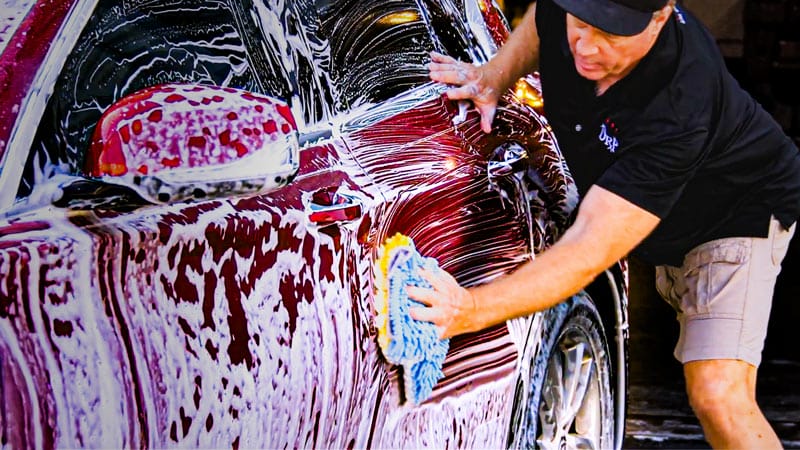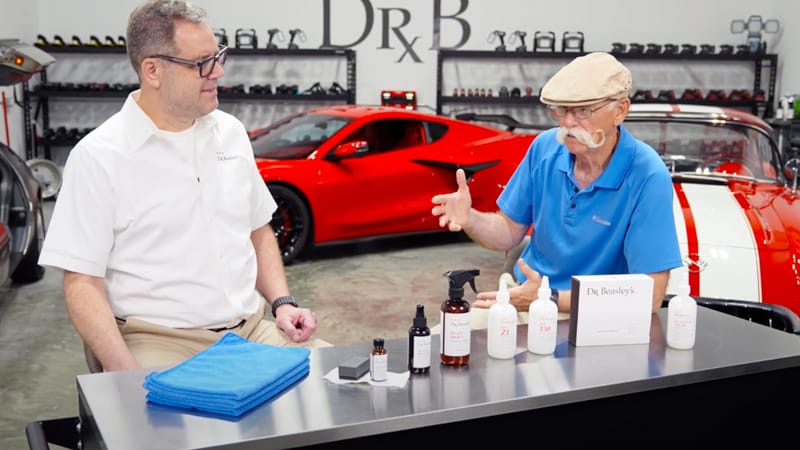Last Updated April 29, 2022
This article is part of a series on the new Dr. Beasley’s Nano Surface Primer system, available now.
When it comes to protection against outside forces, thickness is the name of the game. Whether it’s a knight’s armor or a ceramic coating, the more girded the material, the harder it is to break through. It’s for this reason many coatings require multiple layers to achieve their advertised durability.
This is especially important when you consider how thin a clear coat is. This factory-applied layer of clear paint is the only thing protecting the paint from the elements, and it’s barely the width of a post-it note. Use a buffer to remove scratches and it will be even thinner. You basically need to apply a coating, just to restore protection to a weakened clear coat.
Considering that, thickness is absolutely crucial to coating durability and paintwork protection. It can take you from three years of durability to five. It can keep a water spot from etching through to the paint. It can even make gloss clearer and deeper!
So how do you get to a thicker coating? Stack layer upon layer? Thankfully, no. The answer lies within Dr. Beasley’s new Nano Surface Primers.
How Nano Surface Primers Build Thickness
To get paint ready for ceramic coating, scratches, oxidation and other surface defects must be removed. Otherwise, every little scratch and scuff will be locked in, sticking out like a sore thumb. As we mentioned earlier, this is an abrasive process that removes some of the clear coat to level the finish. As you correct, you lose material that will need to be restored by a ceramic coating.
Nano Surface Primers, on the other hand, do the opposite. As you correct, the NSP nanogel applies a protective nanocoating over the panel you’re working on. This creates a film build — the scientific term for coating thickness. Because there are three primers in the system, that’s three layers of film build applied before you even start coating!
Why Thickness Matters
Now that you know how NSPs get you a thicker coating, let’s talk about why that matters. The answer comes down to two things — durability and shine.
More Thickness, More Durability
It may take years, but even the most durable ceramic coatings wear over time. Abrasion will (very slowly) wear away at a coating, rubbing off microscopic amounts little by little. This is just one of many environmental factors involved in coating longevity, but it stands to reason that if you want a truly long term coating, one that lasts a half decade or more, you need thickness.
It’s not just long term durability we’re talking about here, though. Thickness is also crucial in the short term, because that’s what stops penetrating elements from hitting the clear coat. Let’s say a bird dropping sits for too long on a coated vehicle. It becomes caustic in the sun, and forms an etch mark. With a thin coating, that etch mark could quickly and easily break through to the clear coat. A more girded and robust coating, on the other hand, will make it so the caustic dropping has more coating to go through before it can reach paint. That will allow for more time to address the problem before it can do more permanent damage.
More Thickness, More Clarity
Thickness has another benefit, apart from durability — enhanced gloss. The additional material creates a depth to gloss, creating a sort of candy coating effect as light is reflected at both a high source (the coating surface) and a low source (the clear coat surface). The depth also acts as a focus for light, reflecting a clear image with mirror-like distinction.
How Coating Choice Affects Thickness
Nano Surface Primers build thickness before coating. But what about the coating itself? How do you know which are the most robust? One thing to look for is solids content.
Most ceramic coatings aren’t just coating material — they also have some amount of solvent mixed in to act as a carrier so the coating spreads out more easily. The solvent then evaporates in a process called “flashing”. This unfortunately limits the amount of coating depth you can get with a single layer, since there’s only so much coating left after applying.
But there are other coatings with 100% solids — like Matte Paint Coating Pro and Nano-Resin Pro. These coatings have no solvent to evaporate, so they can achieve considerably more film build in just one application.
Putting Back What Was Lost, And Then Some
With clear coats so thin, having a thick coating to apply after correcting is paramount. You have to replace the protection of the clear coat with the protection of a ceramic coating, and when it comes to protection, the more coating the better. Nano Surface Primers restore thickness as they remove it, putting back what was lost to create a foundation for the most robust, durable coating possible.





Questions? Comments?
Email Us